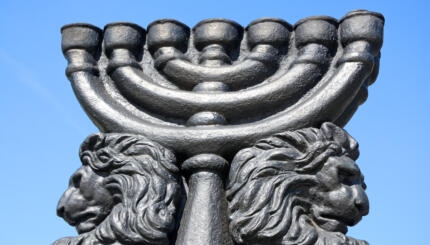Commentary on Parashat Ki Teitzei, Deuteronomy 21:10-25:19
A criminal is surrounded by a ring of townspeople in the town square and under the orders of the court, he is executed: death by stoning. To be sure, any execution is an upsetting scene, but this particular episode in Parshat Ki Teitzei stands out for its deeply troubling nature: the criminal charges are gluttony, drunkenness, and obstinacy. And the criminal is a child (Deut. 21:18).
At first glance, these infractions hardly seem to be on par with capital offenses elsewhere in the Bible: false prophesy (Deut. 13:11), murder (Lev. 24:17), adultery (Lev. 20:10), or kidnapping (Deut. 24:7). These crimes are extremely violent and dangerous. By contrast, the child in this case seems in need of radical intervention, not execution.
The Rebellious Son
The Talmud in Tractate Sanhedrin sees in this young man, who they call the “stubborn and rebellious son,” something much more insidious. Though he began stealing from his parents to fuel his appetites, it predicts that “in the end, he will squander his father’s prosperity,” and accomplishing this, will “take his stand at the crossroads and rob people (Rashi 20:18, citing Sanhedrin 72a).”
What began as familial disappointment will turn into disaster for the family and the innocent people in the village around him. In this sense, though the Rabbis go on to limit the hypothetical applicability of this case until it becomes an impossibility–no real child could ever be stoned for these offenses–they affirm its eternal place in the books for us to learn a lesson:

Help us keep Jewish knowledge accessible to millions of people around the world.
Your donation to My Jewish Learning fuels endless journeys of Jewish discovery. With your help, My Jewish Learning can continue to provide nonstop opportunities for learning, connection and growth.
What goes untreated becomes malignant.
Who Were His Parents?
A deeper reading of the “stubborn and rebellious son” traces his malevolent root seven further back, before his behavior spiraled out of hand, before he was even born. The stubborn and rebellious child is the third legal case of the portion. The suggests that the two preceding cases, which may at first seem unrelated, can be read with this third case as a single, sequential narrative (Sanhedrin 107a). By reading them together, we can trace the root of the antisocial behavior to the actions of the child’s father.
In the first case, an Israelite soldier sees an attractive woman among his foreign captives. If the man wants to marry her, he may do so after shearing her hair and watching her grieve in his home for a month. The next case describes a man with two sons, the older being of a hated wife and the younger of a beloved wife. The Torah prohibits the father from saving the prime inheritance for the beloved younger son.
Though we must fill in the gaps with our imaginations, one can picture the first son, the hated son–perhaps the son of the foreign captive, plucked as spoil during a period of violence and turmoil–as he begins to disobey, turns to alcohol and petty crimes, soon to robbery, perhaps to murder.
Now, he is bound in the town square and awaits execution.
Root Causes
On the one hand, the inclusion of this story may teach us that strict justice must be applied. His behavior is dangerous and will become only more so. On the other hand, if the seeds of his behavior were planted a generation earlier, as his unwanted place in society was carved out by a lust-filled soldier turned insensitive and cruel father, then the execution of the stubborn and rebellious child is not a triumph of justice, but a failure of humanity.
This is true on an individual level as well as on a larger scale. The story is a complex warning against punishing the individual for the ills of the social structure. Societies carry out the ritual stoning of their “stubborn and rebellious sons” in various ways; criminal justice systems worldwide treat the final evils, the violence, the crime, without treating the systemic causes of crime — poverty, discrimination, and injustice.
Internationally, nations such as China, Colombia, and the Democratic Republic of Congo have earned the derision of the West by dint of their domestic civil rights abuses. And while we may have the responsibility to call this behavior out for what it is — crimes against humanity — this scenario must also be considered the symptom of a larger illness.
To what extent do the roots of this behavior go back to previous regimes? What role has military occupation, colonialism, and imperialism played in the development of the nation’s own self image? What role does it continue to play?
Before we pick up the rifle or the stone, before we turn to incarceration or execution to diminish a society’s evils, we must ask, “Have we considered the source of this behavior?” If we do not, then while we may act justly in the short term, we perpetuate the behavior in the long term. While blindness to the systemic causes of crime leaves us only with a dead child and inconsolable parents, education, empowerment, and the fair sharing of resources may extinguish the cycle that created the stubborn and rebellious son. The outcome is a just and functioning civil society.
Provided by American Jewish World Service, pursuing global justice through grassroots change.




